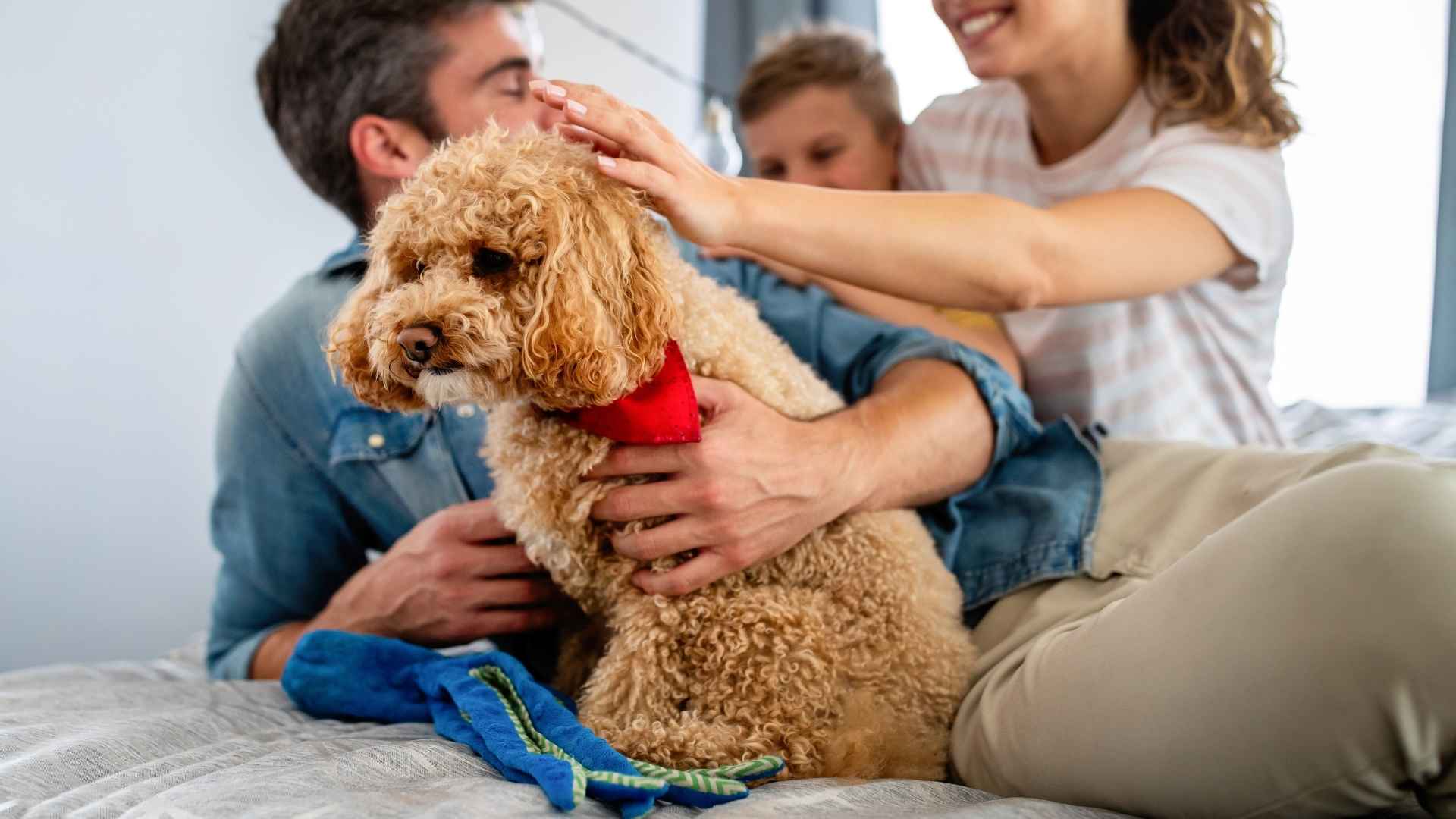Before we had cities, technology, or even chairs to sit on, we had dogs—true family dogs.
These ancient breeds weren’t pampered pets; they were guardians, helpers, and best friends when life was simple but tough. They curled up next to us in tents, watched over our children, and stood watch through cold, dangerous nights.
Passed down like family recipes or treasured heirlooms, these dogs were never forgotten. They survived wars, weather, and time itself. And even today, some of them are still here, bringing that same powerful connection into modern homes.
It’s not just about fur and wagging tails—it’s about soul. These are the dogs that helped build what “family” means. In every heartbeat, they carry something older than we’ll ever fully understand. Come meet the breeds that time tried to forget—but families never did.
Ancient Family Dog Breeds
1. Greyhound
The Greyhound isn’t just sleek and fast — it’s one of the oldest dog breeds, dating back over 4,000 years to ancient Egypt.
Originally bred for hunting, their long legs and aerodynamic build made them prized by royalty. But despite their athletic history, Greyhounds are surprisingly low-key at home and love a calm environment.
Sprinter, not a marathoner
They may top the charts for speed, but Greyhounds are actually known as “40-mph couch potatoes”, as stated by Hills Pet. After a quick burst of energy, they’re perfectly content to snooze by your side for hours. This makes them an ideal fit for families looking for a chill companion with occasional zoomies.
Gentle giants in the family mix
Greyhounds are polite, affectionate, and adapt well to home life, even with children or other dogs. They’re not typically aggressive or reactive, and their sensitive nature responds best to positive reinforcement rather than harsh training.
Simple care, striking appearance
With their short, thin coats, Greyhounds don’t shed much and require minimal grooming. They also have little body fat, which means they prefer warm blankets to cold weather. A soft bed, regular walks, and a little affection — that’s all it takes to keep this ancient breed happy.
2. Poodle
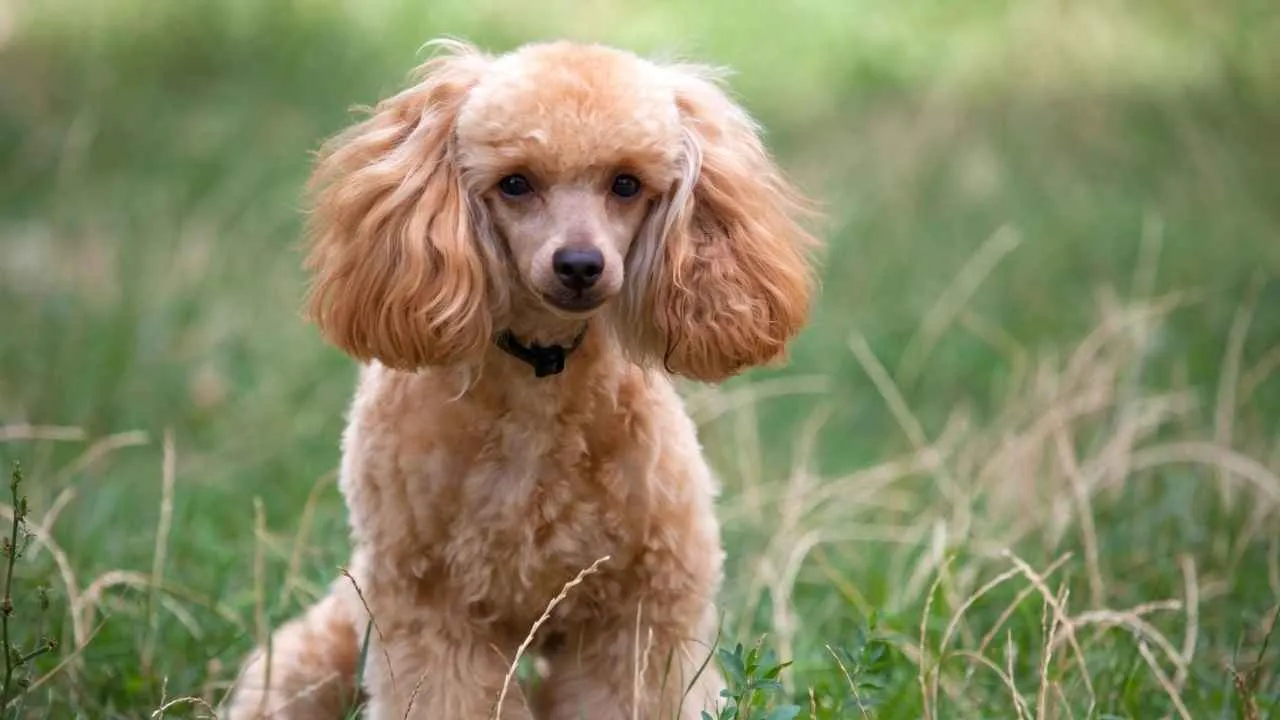
The Poodle isn’t just a pretty face — it’s an ancient dog breed with working roots. Long before becoming synonymous with elegance, Poodles were water retrievers in Germany and later refined in France.
That distinctive haircut? Originally designed for function, not fashion, to help them swim while protecting key joints and organs in cold water.
One of the most trainable minds in the canine world
Standard, Miniature, or Toy — no matter the size, Poodles are problem-solvers. They rank among the most intelligent purebred dogs, often picking up commands in just a few repetitions.
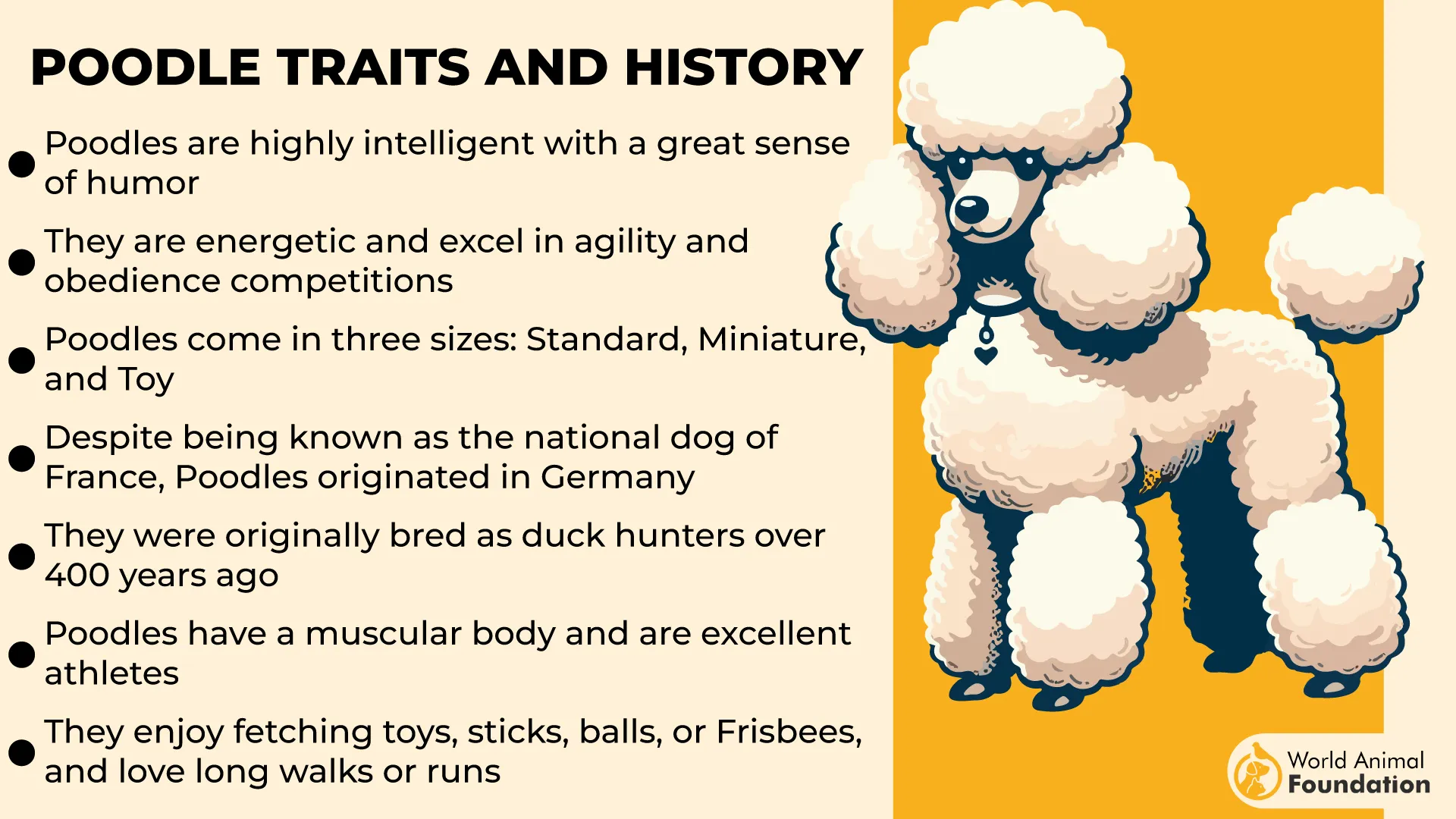
This isn’t a breed to leave bored — they crave stimulation through puzzles, learning new tricks, or structured games that keep their brains busy.
Elegant yet grounded in function
While their appearance has evolved, their working instincts remain. Poodles are alert but not aggressive, loyal without being clingy, and playful without being chaotic. They transition seamlessly between family time, structured activity, and calm evenings.
More than just a showstopper
Unlike some other dog breeds, Poodles don’t shed much and are often considered hypoallergenic — a big plus for allergy-prone households, as per PetMD. Their coat does require upkeep, but the payoff is a clean home and a dog that looks and feels amazing with regular care.
3. Pekingese
The Pekingese was bred to sit on the laps of Chinese emperors, and they haven’t forgotten it. This isn’t just an old breed; it’s a dog molded by dynasties.
For centuries, they were considered sacred, and stealing one was a crime punishable by death. That imperial background still shapes their personality today: confident, poised, and completely unfazed by chaos.
Loyalty with a lion-like mindset
Pekingese are incredibly bonded to their chosen humans, often forming deep attachments with one or two people. They’re not the breed to beg for everyone’s attention — instead, they quietly demand respect. While polite with strangers, their loyalty lies firmly with their inner circle, making them excellent watchdogs despite their size.
Independent, not aloof
Unlike many modern breeds that thrive on constant validation, the Pekingese enjoys solitude just as much as attention. Their independent streak doesn’t mean they don’t love — it just means they love on their own terms. They’re not big on roughhousing with larger animals and prefer calm, familiar company.
Grooming fit for royalty
That iconic mane isn’t just for show. Their dense double coat requires regular brushing to avoid matting, especially around the chest and hindquarters. But with proper grooming, they look every bit as regal as their imperial past demands.
4. Peruvian Inca Orchid
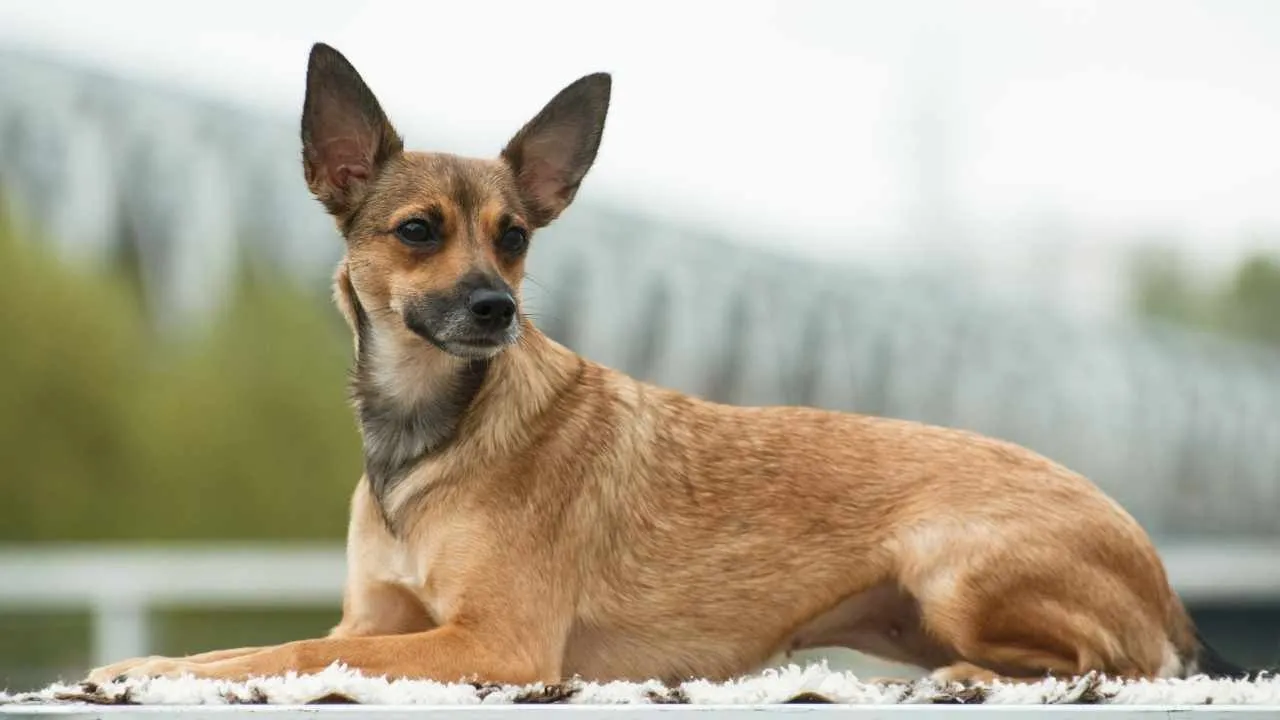
The Peruvian Inca Orchid isn’t just rare — it’s a living piece of history. Hairless versions of this breed have been traced back over 3,000 years. Revered for their mystical presence, they were often kept indoors, believed to have healing energies and spiritual significance.
Hairless but far from delicate
Despite their sleek, exposed skin, these dogs are surprisingly athletic and agile. Originally used as a hunting dog by indigenous people, their lean build and sharp instincts made them quick to chase down small game. Their speed and endurance are still visible today, though they now spend more time as companions than hunters.
Not your typical cuddle buddy
Sensitive and alert, the Peruvian Inca Orchid is deeply affectionate with its inner circle but reserved around strangers, as quoted by Royal Canin.
Even within the same breed, temperaments can vary — some are lively and playful, others are calm and introverted. But across the board, they’re known for their strong bond with their humans and their ability to pick up on emotions.
Skincare matters more than fur
Their lack of coat requires a very different kind of care. Regular moisturizing, sun protection, and temperature control are key, especially in colder climates. But their cleanliness and lack of shedding make them a surprising favorite for allergy-conscious households.
5. Tibetan Terrier
Despite the name, the Tibetan Terrier isn’t a true terrier — it was never bred to dig or chase. Instead, it served as a treasured companion to Buddhist monks in the Himalayas, where it was believed to bring luck and protection. These dogs were never sold, only gifted, and often guarded monastery grounds with quiet loyalty.
Sure-footed and snow-ready
Centuries of navigating rocky terrain and snowy passes gave Tibetan Terriers something rare — “snowshoe” paws, as quoted in Orvis. Broad and flat, their feet act like natural traction pads, allowing them to move gracefully through rough terrain. That mountain-born agility still shows in their balanced gait and playful confidence.
Devoted but not demanding
These dogs form strong emotional bonds but aren’t overly clingy. They enjoy being near their people without constantly seeking attention. Their intelligence means they learn quickly, but they can be independent thinkers, so training should be firm but kind, never forceful.
A coat that’s more than just looks
Their dense, long coat protected them from harsh Himalayan winters. It requires regular grooming to prevent matting, especially behind the ears and under the legs. Unlike some long-haired breeds, their coat grows continuously, much like human hair, and can be trimmed to suit any lifestyle.
6. Lhasa Apso
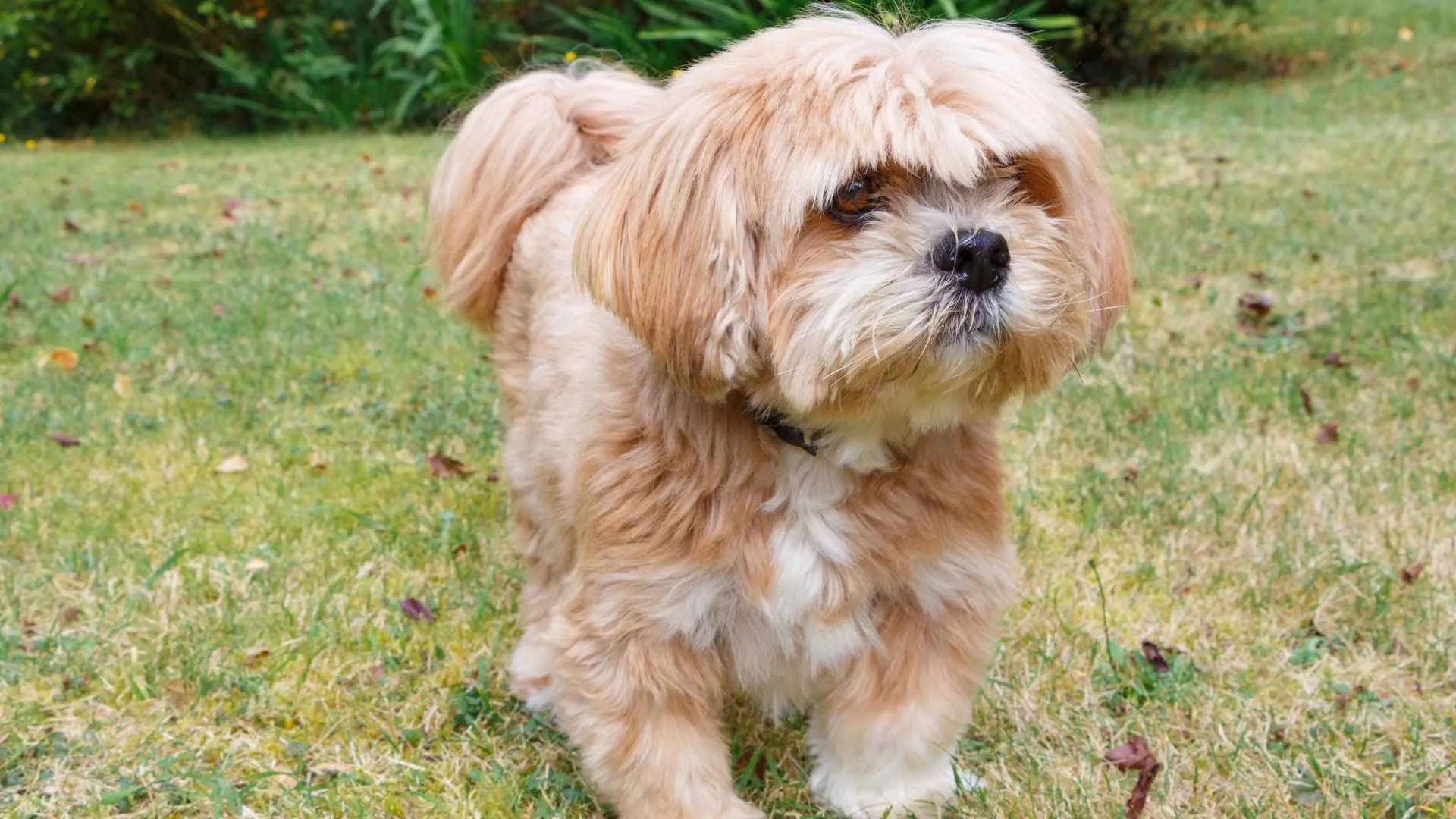
The Lhasa Apso wasn’t bred for laps — it was bred for watchfulness. For centuries, this breed lived inside Tibetan monasteries and royal homes, acting as an alert system for hidden threats.
While the massive Tibetan Mastiffs guarded the exterior, the Lhasa Apso kept careful watch indoors, using its sharp hearing and deep bark to sound the alarm.
Small size, serious confidence
What surprises most people is how boldly this little dog carries itself. The Lhasa Apso doesn’t see itself as small — it approaches new people and situations with quiet scrutiny, not nervous energy. This isn’t a breed that fawns over strangers. Instead, it observes, decides, and only then chooses to engage.
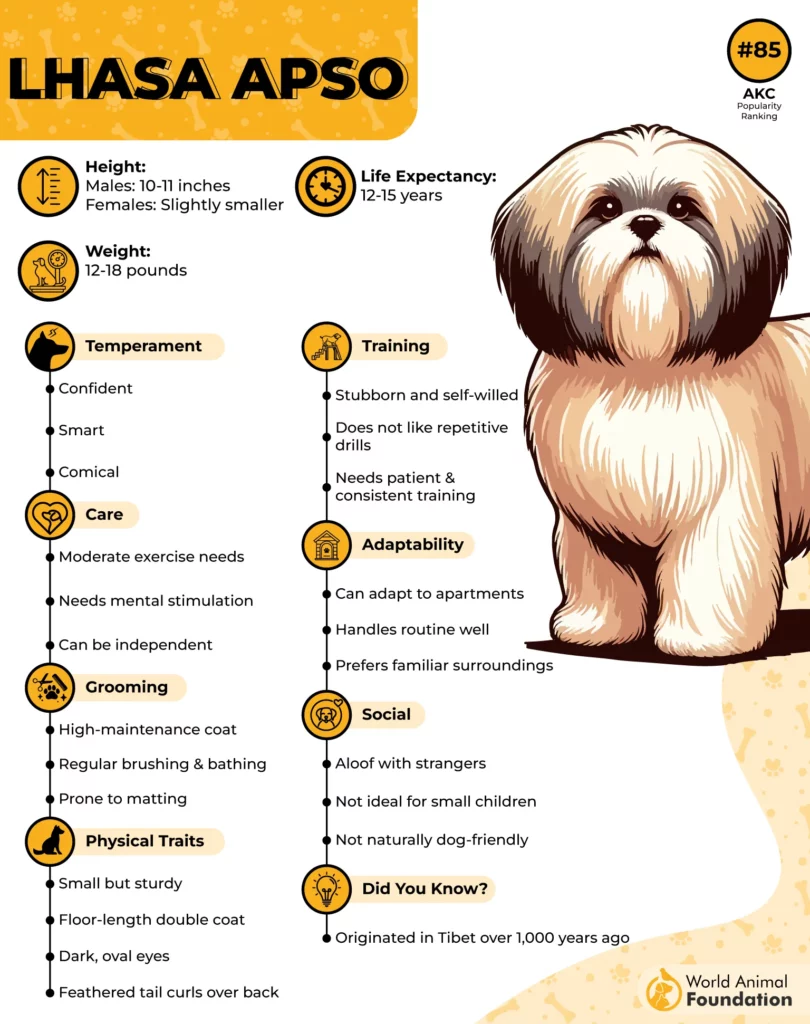
Bonded, but never clingy
Their loyalty is real, but it’s balanced by a streak of independence. The Lhasa Apso doesn’t need constant cuddling to show affection.
It may choose a favorite person in the home, often following them around like a shadow, not demanding, just present. This makes them particularly well-suited for people who appreciate companionship without constant interaction.
A coat with a purpose
That flowing, floor-length coat isn’t just for beauty — it originally helped protect them from the cold winds of the Himalayas.
It parts naturally down the back and requires dedicated grooming to avoid matting. While many owners opt for a shorter pet clip, the full coat remains a symbol of the breed’s elegant and ancient heritage.
7. Samoyed
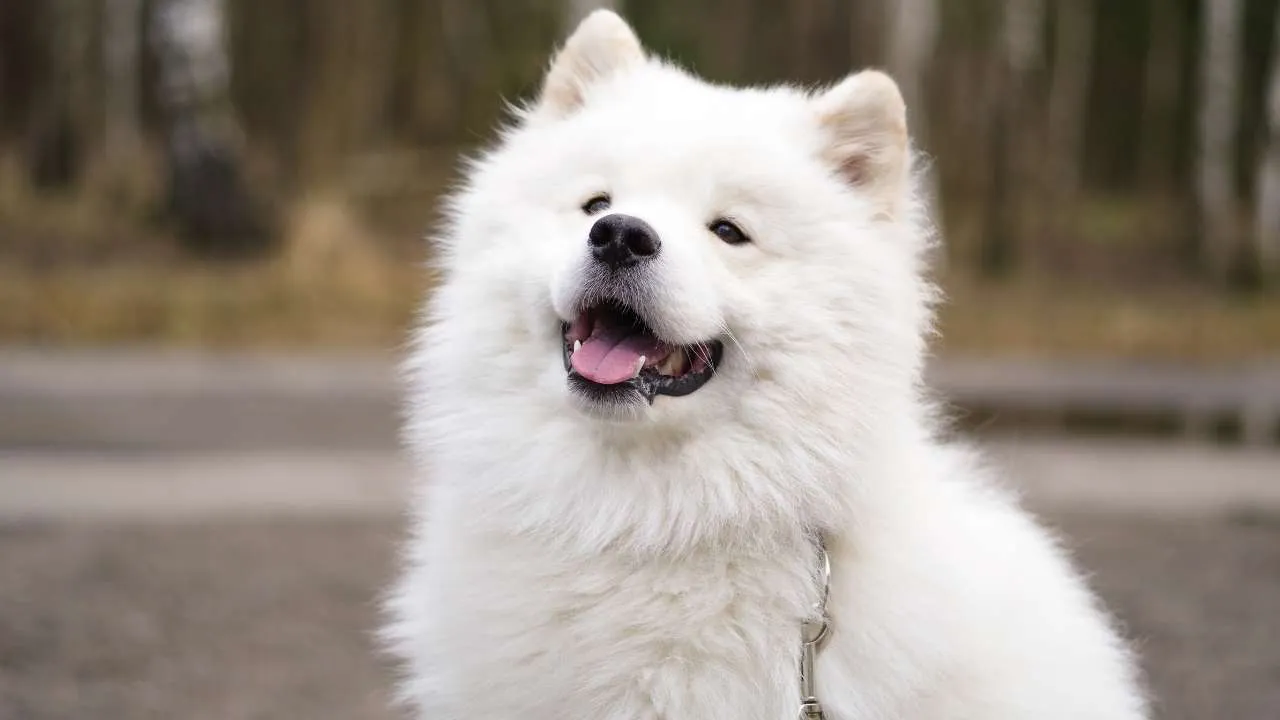
The Samoyed was developed by the nomadic Samoyede people of Siberia, not as a pet, but as an essential member of the tribe.
These dogs pulled sleds, herded reindeer, and slept beside families at night to provide warmth — a true multitasker in freezing Arctic conditions. Their trademark “Sammy smile” isn’t just cute; it’s thought to prevent icicles from forming on their face while working.
Thick coat, low odor, high maintenance
That plush white double coat serves a real purpose — insulation against sub-zero temperatures. According to WebMD, it sheds heavily twice a year and needs consistent brushing to prevent mats, especially around the neck and hind legs.

But for a coat that dense, it surprisingly repels dirt and lacks the strong smell many breeds carry, making it easier to keep clean between baths.
Friendly, but not needy
Samoyeds are sociable with people and other pets, but don’t constantly seek attention. They were bred to work independently, so they’re content with short bursts of affection followed by doing their own thing.
They’re intelligent, vocal, and not shy about expressing boredom, which makes mental stimulation just as important as physical exercise.
Conclusion
From the icy tundras to royal courts, these ancient companions are more than pets—they’re family members whose bloodlines shaped history. Unlike many modern dogs, these breeds thrived in harsh conditions by offering loyalty, protection, and purpose.
Their role went far beyond affection; some served as guard dogs, while others symbolized luck or spiritual power. Whether purebred or a mixed breed, their traits remind us what domesticated dogs once meant to humans—partners in survival, not just playmates.
As pet parents, reconnecting with these time-honored breeds brings something primal and grounding to today’s busy world. While they differ from other breeds, they still fit right into modern life with the same devotion and resilience that helped them endure centuries.
In honoring the most ancient dog breeds, we don’t just celebrate their past—we welcome their timeless spirit into our homes and hearts.


